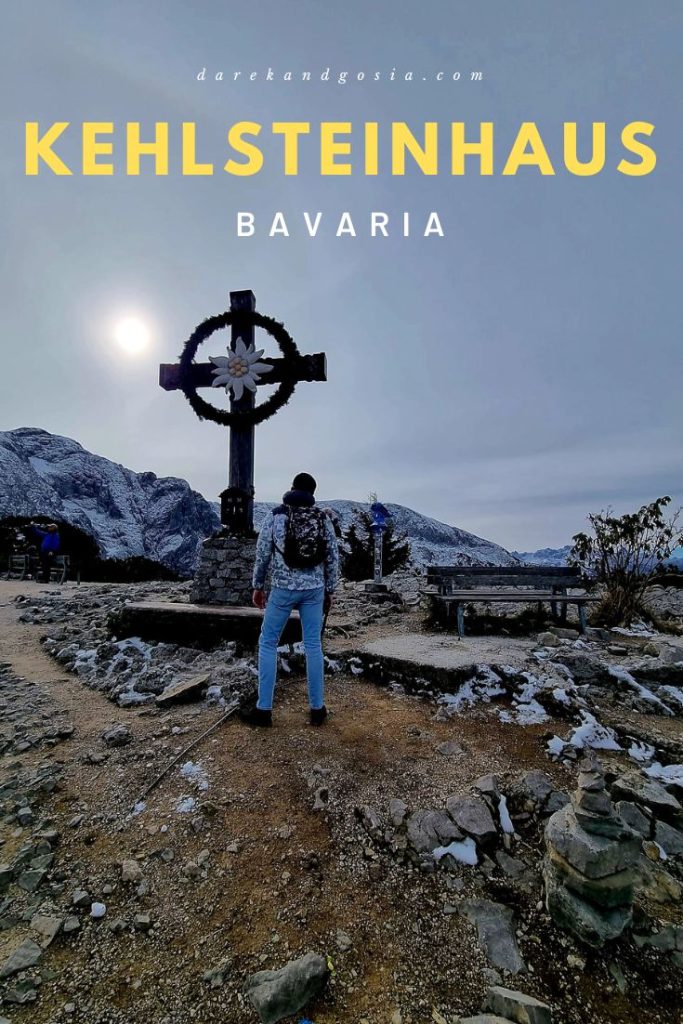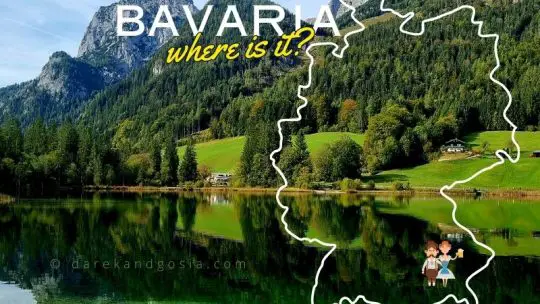Experience Kehlsteinhaus: A historic journey through WWII echoes amid the mesmerizing beauty of the Bavarian Alps. Explore where solemn history and stunning landscapes converge
A Nazi-constructed building perched atop the Kehlstein, a rugged outcrop near Berchtesgaden. It’s the Kehlsteinhaus, or as it’s more famously known in English, the Eagle’s Nest. This architectural marvel has an aura of mystery and history that draws visitors from across the globe.
Darek and Gosia invite you on a unique journey to uncover the hidden stories of Kehlsteinhaus, from its construction to its present-day role as a captivating tourist destination in Bavaria.
Interested? Learn how to get to Eagle’s Nest in Bavaria.

Key Facts about Kehlsteinhaus
| Location | Berchtesgaden, Germany |
| Elevation | 1,834 meters (6,017 feet) |
| Construction Completion | 1938 |
| Inaugurated | 20 April 1939 |
| Owner | Adolf Hitler, German Landmark |
| Website | Kehlsteinhaus Official Website |
A Triumph Over Nature
Imagine the summer of 1937, when Martin Bormann, a prominent figure in the Nazi Party, commissioned the construction of Kehlsteinhaus. This ambitious project, funded by the Nazi Party, aimed to create a building like no other atop the Kehlstein, standing at 1,834 meters (6,017 feet) above Berchtesgaden. But it wasn’t just the elevation that made this feat remarkable; it was the sheer audacity of building on such challenging terrain.
The construction site, nestled high in the Bavarian Alps, was unforgiving. Yet, within just 13 months, this architectural masterpiece emerged. However, this achievement was not without its sacrifices. Tragically, twelve workers lost their lives during the construction, a stark reminder of the challenges faced.
To reach the Kehlsteinhaus, one must navigate a winding road that climbs 800 meters (2,600 feet) over 6.5 kilometers (4.0 miles). The road includes five tunnels and a hairpin turn. It’s a journey that costs 30 million ℛ︁ℳ︁, equivalent to about $247 million USD when adjusted for inflation in 2022. Hitler set a strict deadline for the project’s completion, tied to his birthday in April 1939, which meant construction continued through harsh winter nights, with searchlights illuminating the site.
The journey to the Kehlsteinhaus isn’t for the faint-hearted. Visitors enter through a 124-meter (407-foot) tunnel, leading to a lavish elevator. This tunnel is no ordinary passageway; it’s lined with marble and was heated with warm air from an adjoining service tunnel. A peculiar quirk of the journey was that high-ranking officials were driven through the tunnel, only for their drivers to perform the daring feat of reversing the car for its entire length, as there was no space to turn.
Hitler’s Summit Retreat
Now, let’s talk about the purpose of this extraordinary building. The Kehlsteinhaus was a place of exclusivity, reserved for the Nazi Party’s elite. This mountaintop hideaway hosted government meetings and social gatherings. But its most notable guest? None other than Adolf Hitler himself. He visited Kehlsteinhaus on 14 documented occasions.
Interestingly, there were two ways to reach the building: the road or the Kehlsteinhaus elevator. Hitler had a peculiar fear of the elevator’s winch mechanism attracting lightning strikes, so he often avoided it. The Kehlsteinhaus’s proximity to Hitler’s summer residence, the Berghof, made it a convenient venue for diplomatic engagements. Notably, the French ambassador André François-Poncet visited in 1938 and christened the building the “Eagle’s Nest.”
The Kehlsteinhaus also witnessed personal moments, like the wedding reception of Eva Braun’s sister Gretl to Hermann Fegelein in June 1944. However, it’s important to distinguish it from the teahouse on Mooslahnerkopf Hill, which was demolished after the war due to its association with Hitler.
The Uncertainty Lingers
The year 1945 marked a dramatic shift for the Kehlsteinhaus. It became a target during the 25 April 1945 Bombing of Obersalzberg by the Royal Air Force. While the bombing severely damaged the Berghof area, the Kehlsteinhaus remained relatively unscathed.
However, determining which Allied military unit first reached the Kehlsteinhaus is a matter of debate. Some claim it was the US 7th Infantry Regiment that ventured as far as the elevator, while others suggest it was the 2e Division Blindée, specifically “La Nueve,” a company composed of Spanish Republicans, that occupied the building. Yet, Hermann Louis Finnell of the 3rd Infantry Division stated that his regiment entered the Berghof, not the Kehlsteinhaus, adding to the mystery.
The Kehlsteinhaus remained intact despite the bombing and was used as a military command post by the Allies until 1960 when it was returned to the State of Bavaria.
A Unique Tourist Attraction
Fast forward to today, the Kehlsteinhaus is owned by a charitable trust and serves as a restaurant with indoor dining and an outdoor beer garden. It has transformed into a popular tourist attraction, drawing visitors intrigued by its historical significance and stunning Alpine views.
Private vehicles have been barred from accessing the road to the Kehlsteinhaus since 1952 due to safety concerns. However, the building remains accessible on foot, a two-hour hike from Obersalzberg, or by bus from the Documentation Center. A visit to the Kehlsteinhaus offers insights into its history through plate-glass windows that showcase Allied soldiers’ graffiti, a testament to its wartime role.
For those seeking an adventurous hike, a trail above the Kehlsteinhaus leads to the Mannlgrat ridge, culminating at the summit of the Hoher Göll. This route, served by a Klettersteig, offers hikers a relatively easy path to the top.
In conclusion, the Kehlsteinhaus stands as a captivating testament to a turbulent past. It’s a place where history, nature, and architecture intertwine, offering visitors a unique glimpse into a bygone era. Darek and Gosia encourage you to explore this remarkable site and discover the hidden stories that make it so extraordinary.
Notable Visitors to Kehlsteinhaus
- Adolf Hitler
- French ambassador André François-Poncet
- Eva Braun’s sister Gretl and Hermann Fegelein
Allied Capture of Kehlsteinhaus
| Allied Units | Key Actions |
|---|---|
| US 7th Infantry Regiment | Capture of Berchtesgaden |
| 2e Division Blindée (La Nueve) | Presence at Kehlsteinhaus |
| Spanish Soldiers | Collecting Hitler’s personal items |
Is Kehlsteinhaus worth visiting?
Yes, Kehlsteinhaus (Eagle’s Nest) is often considered worth visiting for its historical significance related to the Nazi era and its stunning panoramic views of the Bavarian Alps. Visitors typically find value in the combination of learning about a pivotal and dark period in history while also experiencing the natural beauty of the location.
However, the worth of a visit can be subjective and largely depends on an individual’s interests in history, nature, and architecture.

